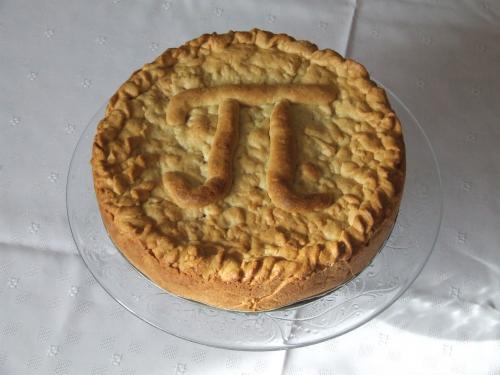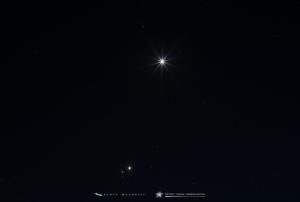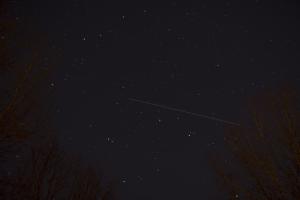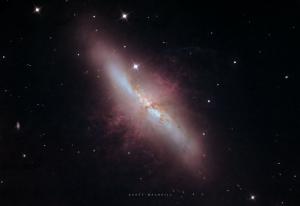Celebration of Space - March 11, 2022
On Sunday, March 13, 2022 at 2:00 am, we will switch our clocks from Eastern Standard Time (EST) to Eastern Daylight Time (EDT), which is the same as Atlantic Standard Time (AST). Over the years the issue of changing our clocks twice per year is often debated, with many in New England supporting a change to AST. But this is not as easy as one may think. Any change would have to be approved by the US Dept of Transportation, and would generally need all New England states to participate. Both of which are unlikely to happen at this time. Historically speaking, the shift to Daylight Savings Time (DST) has only existed on the national level since 1966. There is also a large call for completely abolishing time zones, and having everyone on Coordinated Universal Time (UTC). Regardless of your feelings about the shift to and from DST, it appears that for now, it is here to stay. Before cashing in this Saturday night, remember to shift your clocks one hour forward, and wake up Sunday morning on EDT, and enjoy later sunsets.
An easy mnemonic to remember which direction you should shift your clock: “In the spring, spring ahead one hour. In the fall, fall back one hour.”
This coming Monday, March 14th is Pi Day for 2022. Somewhat a geeky day, Pi Day falls on March 14th every year. You know, 3.14, March 14th... Pi, which represents the ratio of a circle’s circumference to its diameter (at least in Euclidean Geometry), seems to be everyone's favorite number. It is also used in a lot of orbital calculations. Try this, take a pumpkin pie (tasty!) and divide the circumference of your pumpkin pie by the diameter of the delicious circular treat, and you’ll end up with 3.14 (Pi). This exists with all circles in the Universe. On Monday, NASA and other science organizations will be hosting Pi Day challenges, memes, and other activities to celebrate the math geek in all of us. Check out NASA’s page for Pi Day 2022, and celebrate the day with a slice of your favorite pie.
Have you noticed the lack of planets in the evening sky lately? This past week, Jupiter was at superior conjunction, which is when the large planet is on the opposite side of the Sun than Earth. That was the last of the naked-eye-visible planets in the evening sky. At this time we are seeing some of the brighter planets returning to the morning sky, with Venus rising the earliest, at around 3:50 am, followed by Mars at around 4:00 am, then Saturn at around 4:50 am. Early morning commuters may have noticed these, especially Venus, which is ridiculously bright. Even though you can’t see it naked eye, Uranus is currently the only planet visible in the evening sky, though it is setting earlier with each passing night, currently setting around 10:00 pm. Once Uranus departs the night sky, we will be in a period with no planets above the horizon until the morning hours. That is except for Mercury, which pops in and out of the evening twilight sky periodically. Though the flip side of this lull is that when the planets do return, they will put on quite a planetary parade. Skip ahead to December 2022 and we will have all eight planets above the horizon in the evening sky! This will make autumn 2022 the prime season for planetary viewing in 2022. So remain patient for the next few months until Earth swings around the Sun a bit.
This coming Tuesday, March 15, 2022, the International Space Station (ISS), and Tiangong – China’s space station, will return to the evening sky over the USA, putting on easily visible passes over our region each night. Perhaps the ISS and Tiangong can make up for the lull in planetary viewing, at least for a couple of weeks. Evening passes are our favorite because they are easy to see and present an opportunity for the whole family to get out for a view. The alternative is getting up before sunrise and sitting out in the cold morning dew. Here are some notable passes of the stations for the coming week:
ISS:
Tue, Mar 15 at 8:20 pm, starting in the SSW, rising to 19°, heading towards the S and into orbital sunset
Wed, Mar 16 at 9:07 pm, starting in the WSW, rising to 23°, and into orbital sunset.
Thu, Mar 17 at 8:19 pm, starting in the SW, rising to 74°, heading towards the ENE, and into orbital sunset ← Awesome pass!
Tiangong:
Thu, Mar 17 at 7:56 pm, starting in the SSW, rising to 23° heading towards the SE and into orbital sunset.
Note that these times are accurate for Southern New England, and generally acceptable for the entire Northeast. For daily pass times of the stations, as well as other bright satellites, visit the Frosty Drew Daily Satellite Pass Prediction Utility at: https://frostydrew.org/observatory/#satellites. Now get out and spot some awesome!
This past week, we started to release some of the initial images, First Light images, that we captured with our new PlaneWave CDK600 24 inch telescope, which we installed in the Frosty Drew Observatory in October 2021. These first images represent our initial attempts at experimenting with the telescope’s imaging capabilities, which is a big topic considering the last telescope, a Meade LX200 16 inch telescope, was no longer capable of most imaging tasks. The first light images that we captured are rather mind blowing and the resolution is truly fabulous. Over the next few weeks we will continue to release the first light images that we captured. We are stepping up our imaging plans, and once the Full Moon passes, and the Moon starts to depart the night sky, we will resume this activity. You can keep up with image releases from the new telescope by periodically checking in on this tag-based gallery. We will also be releasing images on our Twitter (@FrostyDrewOBSY), and Facebook. Let us know what you think by either replying to this newsletter or commenting on our social media.
- Author:
- Scott MacNeill
- Entry Date:
- Mar 11, 2022
- Published Under:
- Scott MacNeill's Columns






